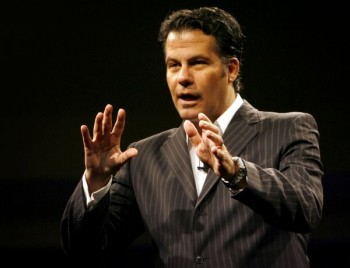Richard Florida is one of the most popular experts on cities and urban planning. His work has been popularized and quite influential among policy makers. Florida’s argument about the value of the creative class in promoting economic growth has driven much of the debate regarding urban growth and planning. However, Florida has critics in economics and other fields. In today’s post, I want to share another excerpt from my Higher Education: Handbook of Theory and Research chapter coauthored with Karri Holley. This section examines the challenges for researchers in using the creative class theory.

Despite its popularity with policymakers, urban planners, and the general public (Center for Cultural Policy Research, 2003; Eakin, 2002; Martin-Brelot, Grossetti, Eckert, Gritsai, & Kovacs, 2010; Wiesand & Sondermann, 2005), the concept of the creative class and its relationship to economic growth within large urban cities is not immune from criticism.
Some economists believe various data on economic development support the notion that city-regions with a skilled workforce, healthy infrastructure, and an engaged market can find increased economic growth (Florida, 2005; Glaeser, 2011).
Others argue that findings and additional analyses suggest that these attributes do not cause economic growth, but rather a city may offer a setting where risk is reduced and productivity can be enhanced, which are crucial ingredients for industry success (Bontje & Musterd, 2009; Peck, 2005; Puga, 2010; Shearmur, 2012).
Skeptics also question the legitimacy of the creative class argument citing the limited empirical basis for the work and the lack of consideration of historical context (Hall, 2004; Peck, 2005; Sawicky, 2003; Shearmur, 2012).
Critics point to two weaknesses in the relationship between the creative class and local economic advantages.
First, the empirical evidence supporting the relationship between desirable amenities such as parks, restaurants, and high-end development is weak (Storper & Manville, 2006).
Second, economic growth cannot be explained solely by understanding the needs and behavior of the creative class, but must also consider labor demand and industry preferences (Peck, 2005).
The question of which came first—the university or the business—challenges researchers in their understanding of local and regional economic development.
The debate over the casual inferences aside, the key point for higher education researchers is to consider the role of higher education institutions in attracting the creative class, providing amenities, and developing an infrastructure supportive of creative work specifically and knowledge-based work more generally.
By better understanding the role of colleges and universities in these elements of the creative class theory, higher education scholars can provide evidence on ways universities engage in these activities and better data for economists seeking to unpack the causal mechanisms at work in supporting creative cities.
Further, defining the creative class proves difficult.
Florida (2002, 2005; 2006) describes the creative class as the individuals in occupations that support innovation (such as computer programming, engineering, science, etc.) in addition to creative professionals (in such sectors as healthcare, education, law, business, etc.) who hold advanced degrees.
However, Markusen (2006), in a study of artists as an example of creative occupations, argues that clusters of such workers do little to demonstrate creativity, but rather illustrate high human capital as indicated by numbers of years of higher education. Her findings reveal that artists demonstrate more complexity than described by Florida in their formation, location, urban impact, and politics.
Higher education scholars can contribute to the knowledge in this area by considering two separate but related questions.
First, how do students and later graduates differ by discipline, degree level, and demographically? This information could help clarify differences between occupations within the creative class.
Second, how does institutional activity differ based on the diversity of academic programs? For example, do institutions with more STEM programs engage in public service activities in their communities differently than liberal arts colleges?
As researchers tease out the ways a diversity of academic programs influence institutional activity, the resulting knowledge would be useful in classifying and describing how programmatic diversity contributes to the ways higher education functions as an anchor institution and promotes city development.
The literature also fails to fully resolve if low-income workers benefit from the higher wages earned by the creative class within a city.
Future researchers should consider how economic and social growth of a large metropolitan city may accrue to the population unequally or unevenly.
Florida and Mellander (2014) suggest that, if low-income workers earn higher wages in a creative region than in a non-creative region, this increase may be undercut by higher costs of living, including housing and food.
The conceptual argument is that the trickle-down benefits of supporting the creative class grow the broader urban economy, but research has not yet determined how or why this trickle-down may occur.
When workers are physically isolated from job opportunities or confined to areas with little to no industry, economic growth spreads unevenly across the region (Hanson, Kominiak, & Carlin, 1997; Ihlanfeldt & Sjoquist, 1998)

